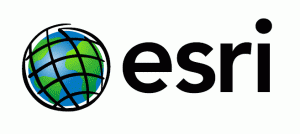Simplifying what your agency can do with its data can actually be somewhat complicated. In last week’s online training, “Simple Ways to do more with Your Data,” topic experts explored what their agencies are doing with their data.
The speakers included:
- Dawn Wright, Chief Scientist, Esri
- Brian Tisdale, Booz Allen Hamilton, NASA Atmospheric Science Data Center
- Suresh K.S. Vannan, Manager, Oak Ridge National Laboratory Distribution Active Archive Center
- Brett Rose, Solution Engineer, Esri
A common thread the presenters focused on was how their agencies are integrating multi-dimensional scientific data to geographic information systems (GIS) and how it’s increasing the use of their data by citizens.
“Science begins with people bringing in information and data from satellites, terrestrial centers or observations from field researchers,” said Rose. You can use spatial analytics to help with understanding where things are, measuring size, shape and distribution, determining how places are related, finding best locations and paths, and detecting and quantifying patterns.
Many of the audience members were eager to learn more about Python, a software package that many of the speakers use to extend and integrate spatial analytics.
So, what does it even do? Python has become pervasive in science and academics. It’s often the first language that people use to develop algorithms and perform analysis. Python has over 56,00 extensive packages that can be used for many different things, supporting a very broad user base.
Python and other software can help your agency connect spatial analysis to GIS, similar to NASA, Oak Ridge and Esri.
According to Rose, Esri is using their data analytics software to take feature data, table data and master data, typically data sets used for GIS, to answer specific questions they have.
We use science every day to answer our basic questions. Some questions are even as simple as, “What school should I send my children to?” “Essentially, spatial analytics is the answer to a question,” said Rose. With spatial analytics you can map out data to look for possible patterns. Finding patterns can help you to describe things and help improve our understanding of the world around us. And then you measure that data to minimize subjectivity and use a scientific method to quantify patterns you see in your data.
Finding the slope of a watershed can help you understand the risk of landslides or flash flooding in specific areas – and that’s just one example of spatial analysis that Rose and Esri use.
Having the tools to utilize spatial analysis, such Python, SciPy, and more, can make your data more accessible and user friendly for your agency’s users.
To learn more about what you can do with Python and other data software, watch the on-demand version of this training here.





Thanks for the synopsis. How did I miss that training? Oh, that’s right, I was at the GEOINT Conference 2015 all week. Great that you have the on-demand presentation version.
Thanks.